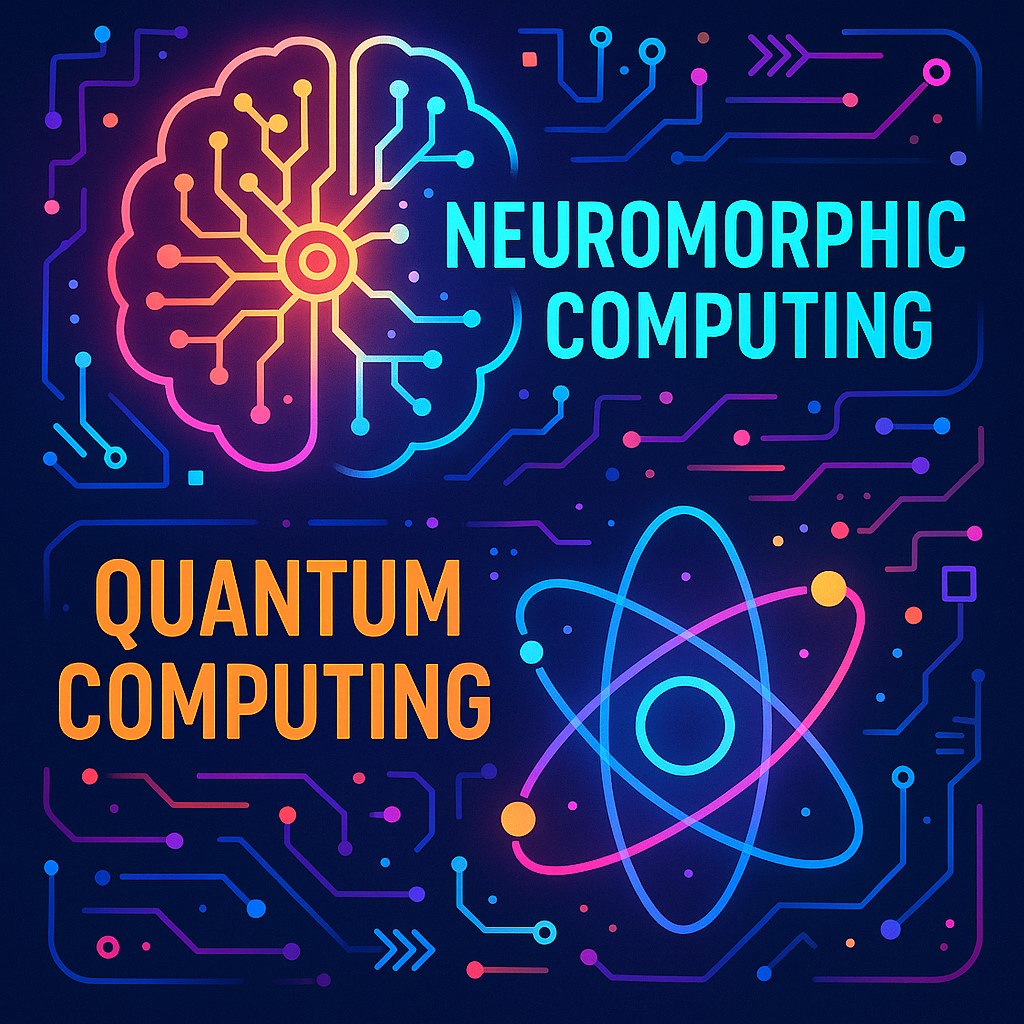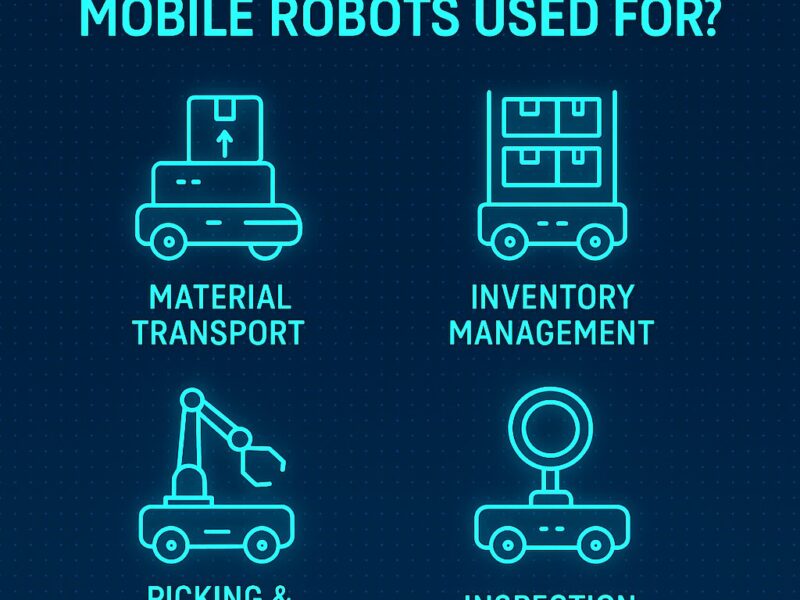Neuromorphic Computing And Quantum Computing

In the race to develop computing systems that go beyond traditional architectures, two revolutionary technologies have emerged at the forefront: neuromorphic computing and quantum computing. These advanced paradigms are redefining how we process information, tackle complex problems, and simulate intelligence and nature.
Although they serve different purposes, both neuromorphic and quantum computing represent significant shifts from the standard Von Neumann architecture. While one mimics the human brain’s structure and functionality, the other draws its power from the strange principles of quantum mechanics.
This article dives deep into these two cutting-edge technologies, explaining what they are, how they work, and how they’re being developed for future applications.
What Is Neuromorphic Computing?
Neuromorphic computing refers to a design approach for building computer hardware that emulates the structure and functionality of the human brain. Unlike traditional computers that separate memory and processing units, neuromorphic systems use a non-Von Neumann architecture where memory and computation occur in the same place.
This design is inspired by biological neural networks—the interconnected web of neurons in our brain. In neuromorphic chips, artificial neurons and synapses are fabricated on silicon, and they communicate using spikes, just like real neurons.
How Neuromorphic Chips Work
Neuromorphic chips use analog circuits or event-driven digital logic to simulate neural behavior. They incorporate:
-
Neurons that process data.
-
Synapses that store weights or learned patterns.
-
Spiking mechanisms to transmit information asynchronously.
One of the key differences between neuromorphic systems and traditional CPUs or GPUs is that they process data in parallel, allowing for real-time responses with low power consumption. This is ideal for tasks like sensory processing, robotics, and adaptive learning.
Advantages of Neuromorphic Computing
Neuromorphic computing offers several benefits that make it a strong candidate for next-generation AI and edge devices:
-
Energy Efficiency: Mimicking the brain allows these systems to use significantly less energy than conventional processors.
-
Real-Time Learning: They can adapt and learn from data on the fly, making them suitable for dynamic environments.
-
Massive Parallelism: Tasks are processed simultaneously rather than sequentially, increasing speed for specific AI applications.
-
Edge Deployment: Their low power and fast decision-making make them ideal for wearable tech, drones, and robotics.
Applications of Neuromorphic Computing
While still in development stages, neuromorphic systems are being tested in various fields:
-
Smart sensors for real-time event detection
-
Autonomous vehicles for adaptive navigation
-
Speech and visual recognition with real-time response
-
Brain-machine interfaces for neuroprosthetics
These systems could be essential in environments where energy, speed, and adaptability are crucial, such as space exploration, battlefield robotics, or mobile AI.
What Is Quantum Computing?
Quantum computing is a revolutionary approach that leverages the fundamental principles of quantum mechanics to perform calculations. Unlike classical bits, which can be either 0 or 1, quantum bits (qubits) can exist in multiple states simultaneously due to superposition.
Furthermore, qubits can be entangled, meaning the state of one qubit is inherently linked to another, no matter the distance. These two principles—superposition and entanglement—allow quantum computers to perform complex computations far faster than traditional systems in specific problem domains.
How Quantum Computers Work
Quantum computers operate using qubits made from trapped ions, superconducting circuits, or photons. These qubits are manipulated through quantum gates, which control how they evolve and interact.
Quantum computation is not about replacing classical computing but about solving problems that are intractable for classical machines. These include:
-
Factorization of large numbers (relevant for cryptography)
-
Simulating quantum systems (useful in chemistry and physics)
-
Optimizing complex systems (logistics, finance, etc.)
Advantages of Quantum Computing
The potential advantages of quantum computing are profound:
-
Exponential Speedup: Certain problems can be solved exponentially faster than classical approaches.
-
Efficient Simulation: Quantum computers can naturally simulate atomic and molecular structures.
-
Unprecedented Parallelism: Qubits allow parallel processing on an unimaginable scale.
-
Cryptography and Security: Could break or replace current encryption protocols.
However, it’s important to note that quantum computing is still in the early stages. Error correction, decoherence, and scalability remain significant challenges.
Applications of Quantum Computing
Quantum computing is expected to impact several high-stakes industries:
-
Drug discovery and material science: Simulate molecular interactions accurately.
-
Climate modeling: Forecast complex environmental systems.
-
Financial modeling: Predict market dynamics with high complexity.
-
Machine learning: Optimize algorithms that require massive computation.
Some hybrid models are even exploring quantum-enhanced machine learning, where quantum processes assist classical models in solving pattern recognition tasks more efficiently.
Comparing Neuromorphic and Quantum Computing
While both technologies push the limits of modern computing, they are built for very different goals:
| Feature | Neuromorphic Computing | Quantum Computing |
|---|---|---|
| Inspiration | Human brain/neural networks | Quantum mechanics |
| Core Unit | Artificial neuron/synapse | Qubit |
| Computation Style | Parallel, spiking networks | Superposition and entanglement |
| Key Strength | Energy-efficient real-time AI | Solving complex, high-dimensional problems |
| Applications | Robotics, sensory processing | Cryptography, simulation, optimization |
| Readiness | Edge-level implementations emerging | Still in experimental stage |
Neuromorphic computing is more AI-focused, aiming to mimic cognition and adaptivity. Quantum computing, on the other hand, is more theoretical and scientific, intended to crack open problems that classical computing can’t manage.
Challenges Facing Both Technologies
Both computing paradigms come with their share of limitations:
-
Neuromorphic computing lacks mature programming models and general-purpose flexibility. It’s still unclear how to standardize hardware and software for widespread deployment.
-
Quantum computing suffers from qubit fragility, environmental noise, and extremely low operating temperatures. It also requires specialized knowledge to program and maintain.
Despite these hurdles, massive investments and global research are fueling rapid advancement in both fields.
The Road Ahead: Integration and Hybrid Models
Rather than competing, neuromorphic and quantum computing might serve complementary roles in the future. For instance:
-
A quantum system could model highly complex data patterns.
-
A neuromorphic chip could handle the sensory input and decision-making in real time.
Such hybrid architectures could combine the brain-like adaptability of neuromorphic systems with the unparalleled power of quantum algorithms, leading to radically new types of computing systems.
Conclusion
Neuromorphic and quantum computing represent two of the most promising frontiers in the evolution of technology. While their architectures and objectives differ significantly, both offer game-changing potential for science, medicine, artificial intelligence, and beyond.
Neuromorphic computing provides a pathway to human-like intelligence in machines, ideal for low-power and real-time decision-making. Quantum computing, on the other hand, offers solutions to problems we once thought were unsolvable due to their scale and complexity.
As research continues and practical breakthroughs emerge, these technologies will shape the next era of computing, far beyond what traditional systems can achieve.
Key Takeaways
-
Neuromorphic computing mimics the brain’s structure for efficient, adaptive AI.
-
Quantum computing uses superposition and entanglement for high-powered problem-solving.
-
Each paradigm has unique advantages and fits different real-world use cases.
-
Future systems may integrate both technologies for powerful hybrid computing.
References
https://en.wikipedia.org/wiki/Neuromorphic_computing
https://en.wikipedia.org/wiki/Quantum_computing
Links License – https://en.wikipedia.org/wiki/Wikipedia:Text_of_the_Creative_Commons_Attribution-ShareAlike_4.0_International_License
Welcome you to check out my other tech blog post for more fun time reading. Thanks For Your Support.
https://techsavvo.com/category/blog/

